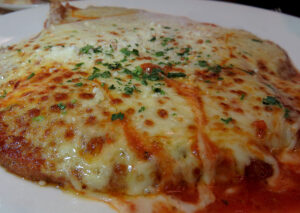Well, now I have done it; I committed a cardinal wine sin … I referred to the Spanish sparkling wine, Cava, as “Champagne”! I may be hauled off by the wine police for committing this terrible crime. Truth be told, I tried to avoid this by cleverly putting quotation marks around the word “Champagne”. Hopefully this worked to avoid time in wine prison. (Come to think of it, that actually doesn’t sound too bad!)
Why all the fuss about how to refer to the bubbly we all love? Well, the French are understandably very proud of the sparkling wine that is produced in the Champagne region of France and believe it’s so special that only sparkling wine from that region should be called “Champagne.” And the French have good reason to be proud, because arguably the best sparkling wines of the world are produced in Champagne and lawmakers around the world agreed and therefore enacted laws ensuring that use of the word “Champagne” refers only to sparkling wine from the region of the same name. Even sparkling wine produced elsewhere in France can’t be called “Champagne”.
With the legalities out of the way, what is Cava and what does it have to do with Champagne? Well Cava and Champagne are both great sparkling wines that have a key feature in common: they are both made essentially the same way and when Cava is done well – while you might not mistake it for a true Champagne – it is often head and shoulders above other sparkling wines that are similarly priced. Cava is truly the people’s Champagne! When traveling in Spain, it is not uncommon to see people casually sipping Cava at all hours of the day, and indeed, like many sparkling wines, it goes with just about any food, from eggs to a wide variety of tapas, Asian food and almost anything else in between. And while we think of Champagne as a celebratory beverage, not so with Cava. Just opening a bottle or drinking a glass that costs a fraction of the price of Champagne is celebration enough.
So what’s this magical method that makes this stuff so good? Two fermentations; the second of which takes place in the very bottle that we buy as consumers. Universally, it used to be called “Methode Champenoise” but again those pesky proud French won’t let us use anything even approaching the word “Champagne,” so unless it’s made in Champagne, we have to call even the method by which the bubbles are produced something else, and phrases such as “Traditional Method” or the like can be used on bottles of Cava that are made this way.
And what’s so special about this method? These kinds of sparkling wines are first made much the same as regular still white wine (although the grapes are harvested earlier to assure that they are high in acidity which gives Champagne its “freshness” and the grapes are treated more gently to preserve the delicacy of Champagne). But then, the magic begins. Sugar and yeast (known as “liqueur de tirage” in Champagne) are added to the bottle of white wine and capped with a temporary cap (literally a bottle cap like you find on a bottle of beer) and voila, a second fermentation takes place in the bottle (add sugar and yeast to just about anything and it will start to ferment).
After fermentation, the dead yeast cells (the fancy term for dead yeast cells is “lees”) sit in the bottle and interact with the wine and that imparts this wonderful yeast, toasty, brioche taste to the wine. (Makes sense, right? When you make bread you use yeast, thus the same flavor.) Fermentation also produces CO2, thus the bubbles. After the wine interacts with the dead yeast, er … lees, for a period of time, it’s time to finish the process and get the lees out of the bottle. This is literally done by slowly pointing the bottle neck down over a period of days by machine or many weeks by hand (called “riddling”) until the dead yeast is all in the neck of the bottle. The neck is then frozen, and the bottle cap is removed and out pops the dead yeast (along with some wine).
But what to do about the lost volume that pops out? Another secret to this method is the addition of a combination of some reserve wine and sugar (known as “liquor d’expedition” in champagne) as the very last step. And the amount of sugar used is called the “dosage” and it dictates the style of bubbly we have and how sweet it will be: “Brut” uses a small amount of sugar and tastes very dry, “extra dry” a bit more sugar and sweeter, “dry” a bit more and so on (the use of “extra dry” and “dry” for what are essentially sweet wines never made sense to me). If no sugar is added you will see terms such as “Natural” or “Naturale” or “no Dosage” on the label and this is the driest of dry sparkling wine.
One of my favorite Cava sparklers is Cune Brut made by the great producer Vina Real at about $15. Another sentimental favorite is Freixenet Cordon Negro Brut (this was my go-to sparkler back in the day and at less than $15 it’s hard to beat. Another very good Cava at about that same price point is Segura Viudas Brut.
Although the vast majority of Cava is made in the Penedes wine region of Cataluña, Spain (a short drive from Barcelona), it can be made in various other regions in Spain. And even though Cava is made from different grapes than those used in Champagne (Champagne usually uses Chardonnay, Pinot Noir and Pinot Meunier or a combination thereof while Cava usually consists of such unfamiliar sounding grapes as Xarel-lo, Macabeo and Parellada), darned if the use of the same method as Champagne doesn’t result in a wine that has a lot of the characteristics of true Champagne at a fraction of the cost. That’s why it is The People’s Champagne!
Cheers, Ray
If you enjoyed this article, please join the Cuvée Ray Wine Lovers Facebook Group by clicking HERE for some fun wine discussions among wine lovers.































